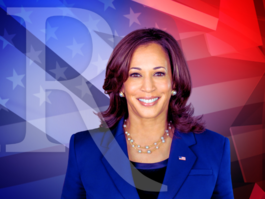Is College Worth It? Increasing Numbers Say No
A Commentary By Michael Barone
"Too many people are going to college," writes my American Enterprise Institute colleague Charles Murray. That's not a response to the mob of students who attacked him and the liberal professor who had invited him to speak back in March at Middlebury College. It's the title of the third chapter in his 2008 book, "Real Education: Four Simple Truths for Bringing America's Schools Back to Reality."
Since Murray wrote those words, higher-education enrollment has in fact declined, from 20.6 million in 2011 to 19 million in 2016, according to Ohio University economists Richard Vedder and Justin Strehle, who wrote about it in The Wall Street Journal. That 8 percent drop was concentrated in community colleges and for-profit schools.
But enrollment has been no better than flat at large four-year universities, and law school enrollment plunged by 31 percent from 2010 to 2015. And freshman enrollment at the University of Missouri has fallen by 35 percent since the riots during which a faculty member called for "muscle" against a student journalist.
One reason for the flight, Vedder and Strehle argue, is that the costs of higher education keep rising while the returns for a college diploma are getting worse. Tuitions and fees rose by 74 percent, adjusted for inflation, from 2000 to 2016, while the earnings differential between high-school and college graduates fell 10 percent.
For years, policymakers subsidized higher education, along with homeownership, because they noticed that college graduates and homeowners earned more and had stronger community ties than others. The thinking was that more subsidies would produce more of both.
Instead, over-subsidization led to the bursting of a housing bubble, and it seems to be leading now to what Tennessee law professor Glenn Reynolds identifies as the bursting of the higher-education bubble. The intended beneficiaries were left worse off after foreclosures, and the same may prove true for those with student loan debt (higher today than credit card debt).
It certainly looks as if federal aid and student loan and grant money have been vacuumed up by colleges and universities, which nationwide now employ more administrators than teachers. And this administrative bloat has had additional malign effects.
College and university administrators have done more to encourage and little to nothing to discourage campus violence -- e.g., the attacks on Murray at Middlebury, the riots to bar Ann Coulter from Berkeley and Heather Mac Donald from Claremont, the orgy to punish Bret Weinstein for refusing to stay off campus on "no whites" day at Evergreen State.
Administrators gleefully accepted the Obama Education Department's "guidance" to set up kangaroo courts to deny accused students legal representation, knowledge of charges against them and the right not to testify against themselves -- all to combat a bogus crisis of campus rapes based on misleading statistics. This persecution is documented in detail by KC Johnson and Stuart Taylor in the recent book "The Campus Rape Frenzy."
Administrators have also defended restrictive speech codes, which have made our campuses the part of America least open to free expression, against attacks from the indefatigable Foundation for Individual Rights in Education.
Young people planning their futures might be wise to hesitate to commit their time and money to institutions run by the people committing these outrages. And they have reason to suspect they don't offer much in the way of serious education.
The long march of the '60s generation has politicized disciplines from English to anthropology. University faculties, which range from the merely liberal to revolutionary leftists -- some diversity there! -- ensure that many classes are limited to mind-deadening denunciations of dead white men. Students interested in Shakespeare or American constitutional history need not apply.
Ethnic and women's studies departments have produced, here and there, some worthy scholarship, but a lot more of it is mindless agitprop. Thousands of Ph.D. theses are submitted each year in incomprehensible politically correct jargon, to be unread by anyone except writer and adviser -- or perhaps to be published in the plethora of similarly unread "peer-reviewed" journals, whose peer review process is not necessarily as rigorous as you think. One of these published an obvious spoof article submitted in jest, which was titled "The Conceptual Penis as a Social Construct." This piece of anything but scholarship went right through without anyone's noticing it was a joke. It argued that penises are best understood as "an enacted social construct that is both damaging and problematic for society and future generations."
In "Real Education," Charles Murray argued that too many people go to college. Nine years later, it seems that more and more young people are concluding that American higher education -- and its administrative bloat -- is not worth their time or money. They may well be right.
Michael Barone is a senior political analyst for the Washington Examiner, resident fellow at the American Enterprise Institute and longtime co-author of The Almanac of American Politics.
COPYRIGHT 2017 CREATORS.COM
See Other Political Commentary.
See Other Commentaries by Michael Barone.
Views expressed in this column are those of the author, not those of Rasmussen Reports.
Rasmussen Reports is a media company specializing in the collection, publication and distribution of public opinion information.
We conduct public opinion polls on a variety of topics to inform our audience on events in the news and other topics of interest. To ensure editorial control and independence, we pay for the polls ourselves and generate revenue through the sale of subscriptions, sponsorships, and advertising. Nightly polling on politics, business and lifestyle topics provides the content to update the Rasmussen Reports web site many times each day. If it's in the news, it's in our polls. Additionally, the data drives a daily update newsletter and various media outlets across the country.
Some information, including the Rasmussen Reports daily Presidential Tracking Poll and commentaries are available for free to the general public. Subscriptions are available for $4.95 a month or 34.95 a year that provide subscribers with exclusive access to more than 20 stories per week on upcoming elections, consumer confidence, and issues that affect us all. For those who are really into the numbers, Platinum Members can review demographic crosstabs and a full history of our data.
To learn more about our methodology, click here.



